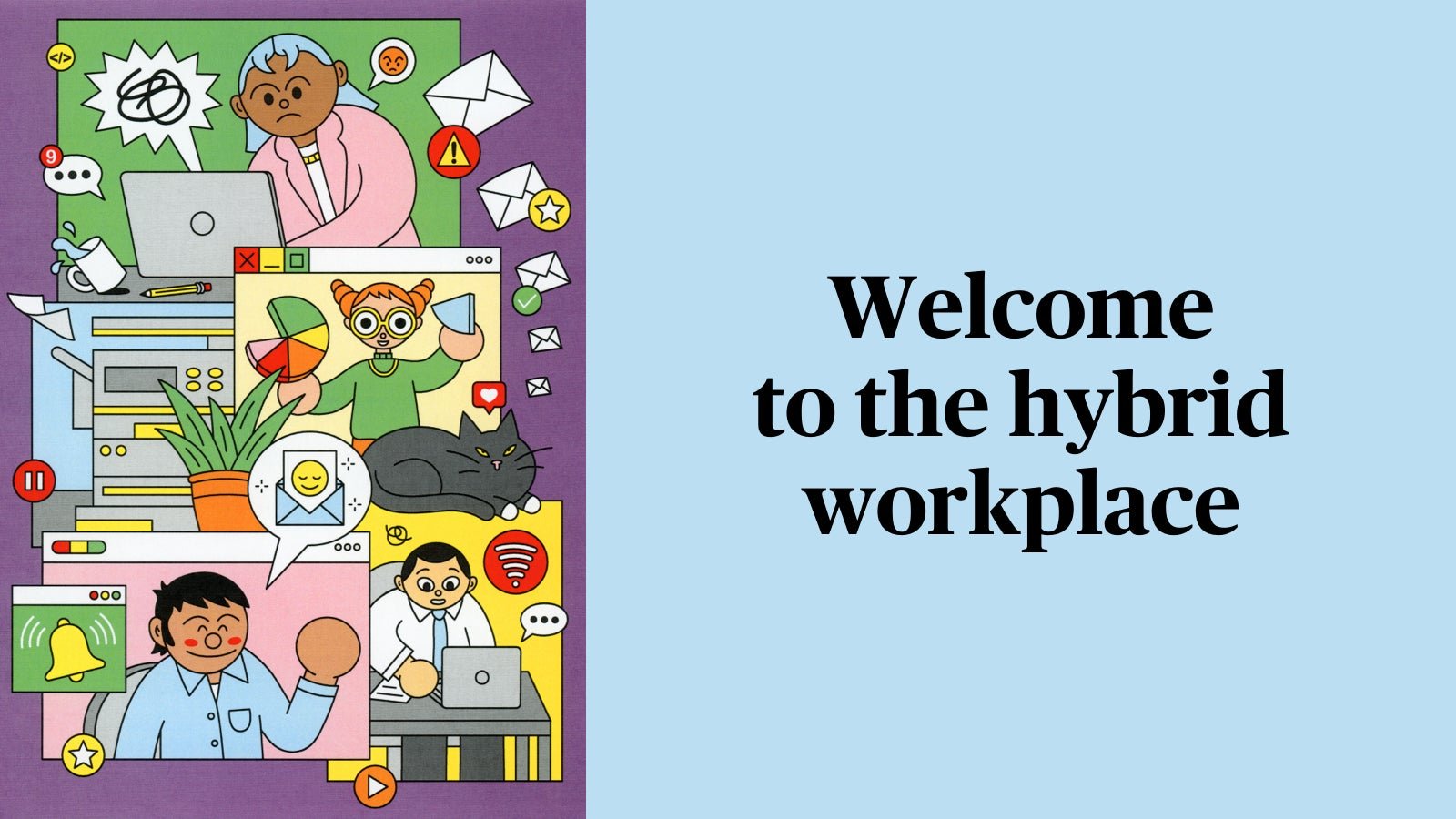For members—Welcome to the hybrid workplace
[qz-guide-hero id=”434624846″ title=”💡 The Big Idea” description=”As parts of the world reopen, dozens of companies are navigating the complexities of allowing employees to work from home and the office.”]


[qz-guide-hero id=”434624846″ title=”💡 The Big Idea” description=”As parts of the world reopen, dozens of companies are navigating the complexities of allowing employees to work from home and the office.”]
Explain it like I’m 5!
What’s hybrid work?
It’s not work from home, it’s not the old school expectation to come into the office, it’s something in between. At its most abstract, a hybrid work plan would allow employees to work at home when they wanted or to come into the office sometimes. The specifics, though, vary by company—one might have days when certain teams come into the office, while others might leave it completely up to the employees.
By the digits
91%: People who said they’d rather be back in the office in some capacity, in a January 2021 survey
70%: People who say they now work on weekends when their companies transitioned to remote work during the pandemic, according to a survey from staffing firm Robert Half
45%: Respondents to the same survey who say they regularly work more hours during the week than they did before, which experts agree is a recipe for burnout
85%: People who say they are more likely to stay with a company in a work-from-anywhere environment, according to a survey from Accenture
56%: Workers who say their company has not asked them about plans for a possible return to the office
To escape Zoom fatigue or avoid tech glitches
To brainstorm or work collaboratively in person
…and why people might want to stay home
To work without office distractions
For caregiving responsibilities
Commonly held question
How can I make hybrid work function for my company?
The best of the office and remote work? It won’t happen without a few thorny issues, so Quartz contacted leading firms and collected ideas from experts to ask about their best tips for hybrid work. Here are a few top tips we learned.
✍️ Get used to writing things down
📝 Ask employees what they want
🔭 Train managers to recognize proximity bias
🤔 Experiment like you would with a new product
🤯 Embrace the complexity
How to run a hybrid meeting
- Pay attention to where everyone will be looking. If there’s a whiteboard, for example, can everyone see it?
- Add a facilitator. For large meetings, try adding one facilitator for each location. They’re tasked with keeping things running smoothly—and keeping things rolling if there are glitches.
- Draw up a “seating chart” so you never forget who’s on the phone.
Fashion victim
Remember shoes? We barely do. What’s appropriate to wear on your feet could be an important part of returning to the office. Let’s break down the shoe trends affecting your back-to-work look:
⛔ Out: high heels (sort of)
✅ In: sandals, flats, loafers, fashion sneakers, Crocs
In short, comfort is king—and that means productivity in the workplace.
The same goes for clothes, in fact. After decades of the tyranny of suits and collared shirts, the return to the office is a chance to rethink what constitutes a professional appearance—perhaps making work attire both more comfortable and more equitable in the process.
📣 Sound off
As more companies adopt hybrid work policies, do you see more upsides or downsides to working mostly remotely?
In last week’s poll about the ascent of African entertainment, 49% respondents said Fela Kuti was the best African musician of all time. Here’s an extra Fela song to play you into your week.